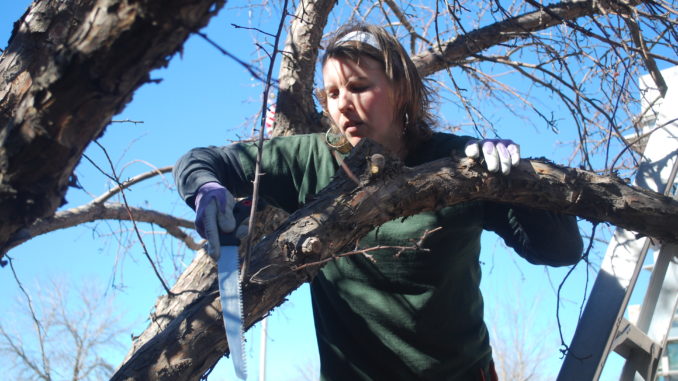
Recent wintry weather across parts of Colorado is a reminder that colder months are ahead and freezing temperatures can occur quickly in the fall.
As temperatures drop, trees in urban and community settings across Colorado go dormant, and they require care before and during the winter to remain in top health. Residents can take measures now and through spring to help their trees through the oncoming harsh conditions, said Dana Coelho, Urban and Community Forestry Program Manager for the Colorado State Forest Service.
The CSFS offers the following tips to prepare Colorado’s urban trees for winter:
- Wrap the trunk.In Colorado, thin-barked trees like honeylocust, maple and linden are susceptible to sunscald and frost cracks because of drastic winter temperature fluctuations. To prevent bark damage, wrap the trunks of younger trees up to the first branches using commercial tree wrap. Leave the wrap on until early April.
- Mulch the base.Apply 2 to 4 inches of wood chips, bark or other organic mulch near the base of the tree, but not against it, to reduce soil evaporation, improve water absorption and insulate against temperature extremes. Some community recycling programs provide wood chips free of charge.
- Recycle leaves.Instead of disposing of autumn leaves, consider layering them around the base of each tree as mulch, or blend them into the yard with a mulching mower to retain nutrients.
- Give them a good drink.Before storing the garden hose for winter, water trees in the area extending from the trunk to the extent of the longest branches, known as the drip line (the point on the ground where water will drip off the widest-reaching branch). Water slowly, with a sprinkler or soaker hose, at a rate of 10 gallons per inch of tree diameter. Ample moisture in the ground at the onset of winter sets trees up for success to start growing in spring. Watering conifers is especially important since they keep their leaves all year long and lose more moisture over the winter.
- Focus on younger trees.With less extensive root systems, they require the most care.
- Wait to prune until winter.Late winter is the best time for pruning most tree species, but it can be done whenever trees are dormant over the winter months. Common reasons for pruning are to remove dead branches and improve a tree’s form. Always prune just outside the branch collar (the point where a branch joins a larger one) and don’t remove any branches without good reason.
Coelho said planted trees often require additional, regular watering over the winter. During extended dry periods (e.g., more than two weeks without snow cover), provide supplemental water per the guidelines above. The best time for winter watering is on warmer days, when snow has melted on the ground and the temperature is above 40 degrees.
Support Northern Colorado Journalism
Show your support for North Forty News by helping us produce more content. It's a kind and simple gesture that will help us continue to bring more content to you.
BONUS - Donors get a link in their receipt to sign up for our once-per-week instant text messaging alert. Get your e-copy of North Forty News the moment it is released!
Click to Donate
